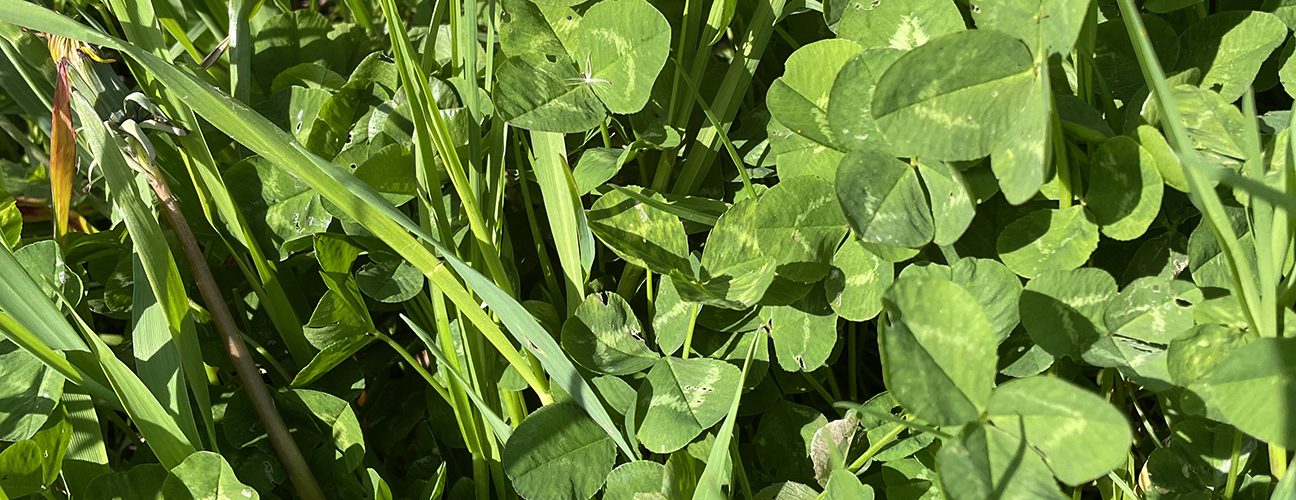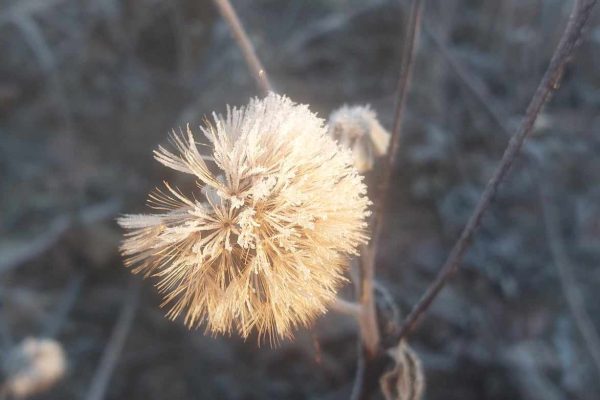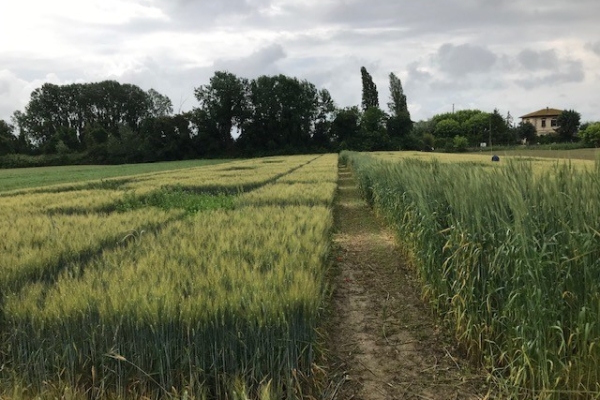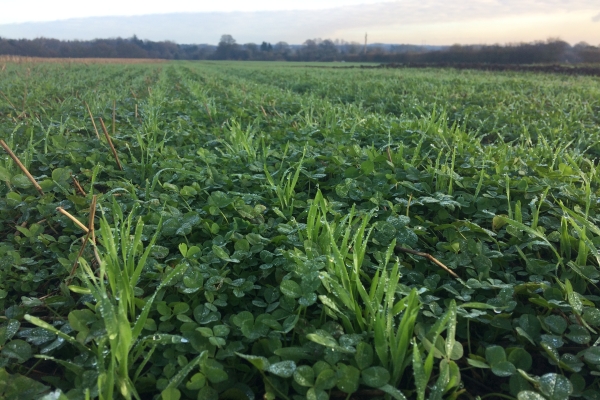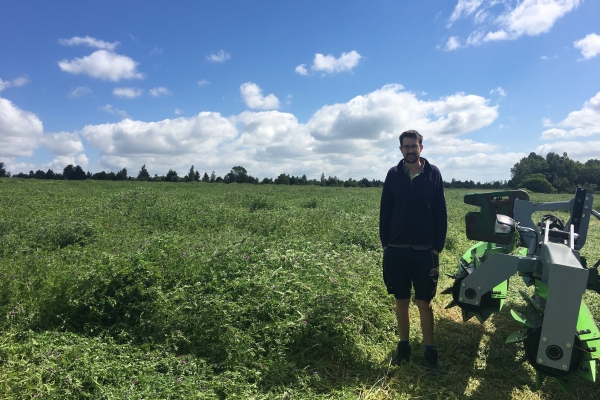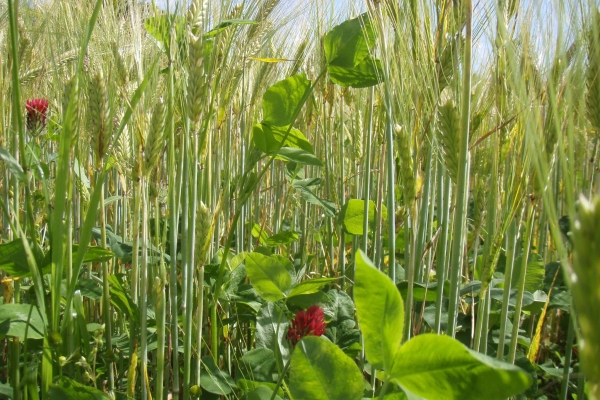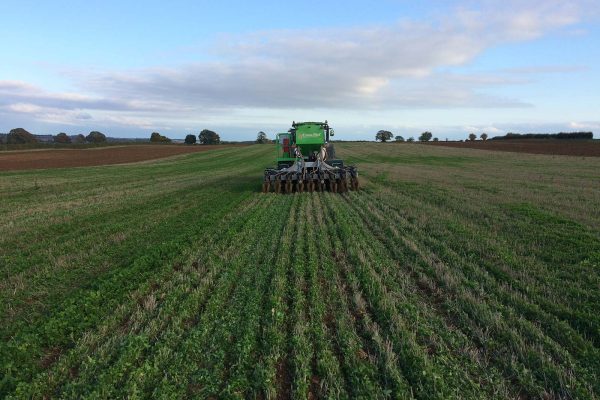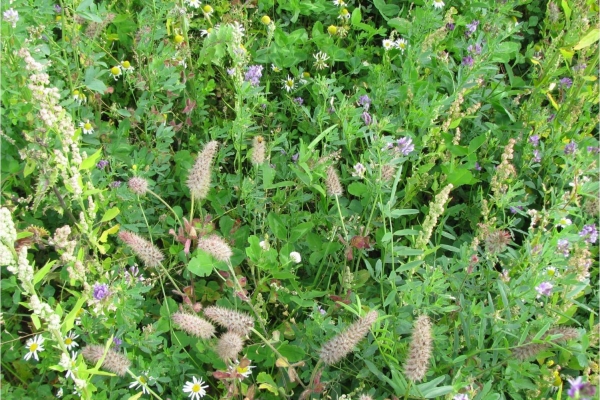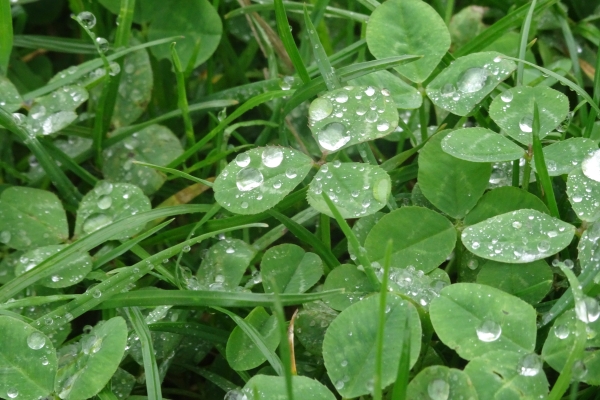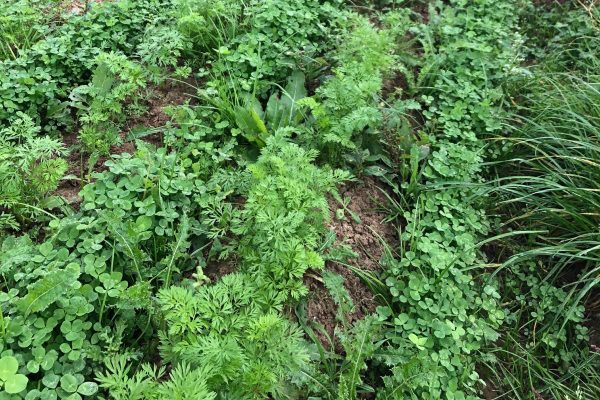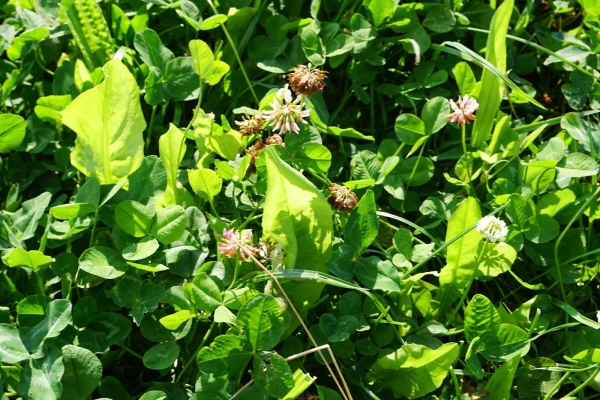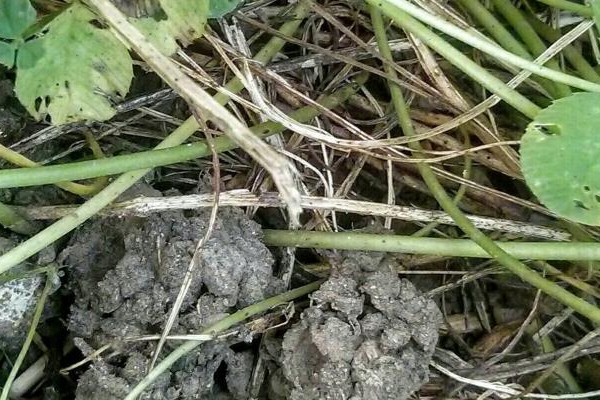Living With Living Mulches
ORFC 2025
Resource explained
This is an audio recording of an Agricology session at the Oxford Real Farming Conference 2025. It featured Matt Smee in conversation with Mark Lea of Green Acres farm in Shropshire on his experiences of using living mulches (LM) over the past 5 years. Living mulches offer an alternative approach for growing arable crops, with research showing the practice can improve nitrogen (N) availability, reduce runoff, increase biodiversity, promote soil health and improve ecosystem services. However, adopting the practice comes with many challenges and considerations. Mark described the session as ‘How not to do it’ and outlined the challenges he faced, what he has learnt, and the key practical considerations needed to adopt this approach.
Findings & recommendations
- Undersowing LM into a spring cereal (oats preferably or wheat) after 2 weed harrows has worked best.
- LM needs to be short and uncompetitive – Mark has used 70% wild white clover, 30% medium white clover.
- No yield penalty in the first year.
- Autumn cereal crop in year 2 needs to be vigorous and competitive; Mark suggests rye, oats and wheat (not modern cultivars) in order of preference.
- Simtech direct drill is effective. Mark used normal seed rates but with hindsight should have increased the rate.
- Autumn drilling of cereal in year 2 works. Best result came from mid-September drilling of cereal rye.
- Graze hard with sheep before drilling. Over-winter grazing is good (dependent on weather), but sheep need to be off before stem extension of cereal (end of Feb).
- Clover reduces tillering causing a yield penalty (8-30%+).
- Establishment is a lot cheaper, but also lots of benefits like N accumulation, grazing, soil health etc.
- Need to think of how LM can fit into the whole farm system.
- One rye crop completely wiped out with slugs.
- Direct sowing non-clover elements of a herbal ley at the end worked brilliantly.
- LM works better for annual weed control but favours perennial weeds.
- Deep dive on living mulches will be published on Agricology soon.
